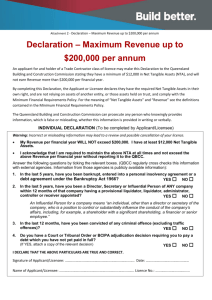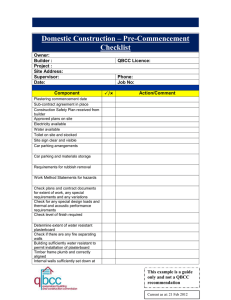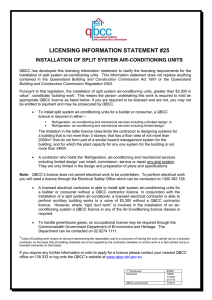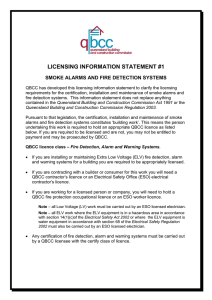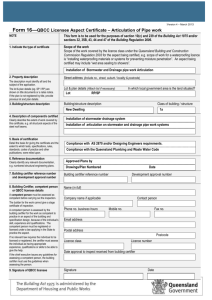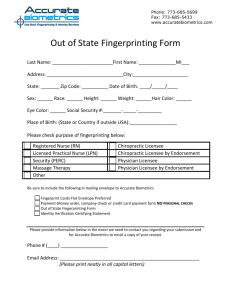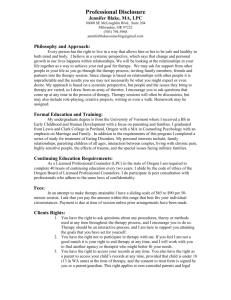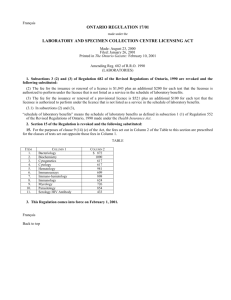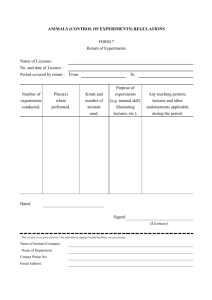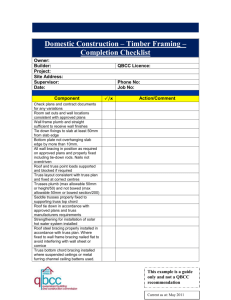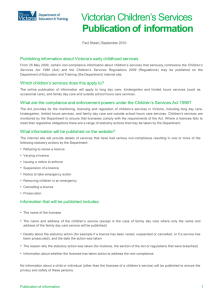Partnerships - Queensland Building and Construction Commission
advertisement
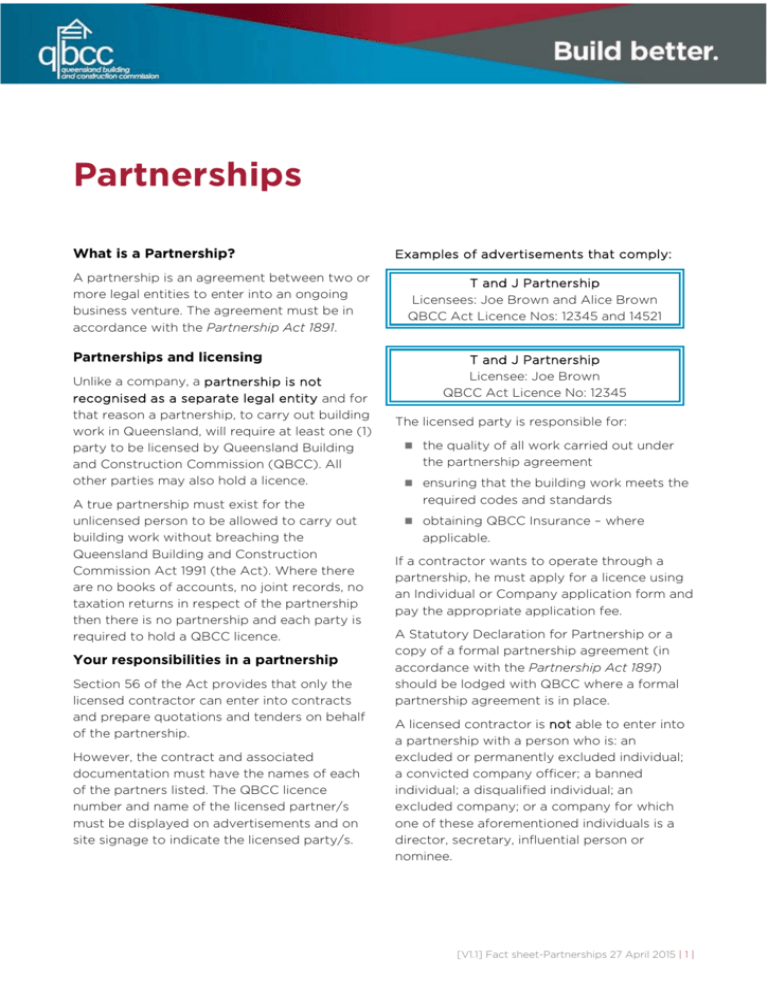
Partnerships What is a Partnership? A partnership is an agreement between two or more legal entities to enter into an ongoing business venture. The agreement must be in accordance with the Partnership Act 1891. Partnerships and licensing Unlike a company, a partnership is not recognised as a separate legal entity and for that reason a partnership, to carry out building work in Queensland, will require at least one (1) party to be licensed by Queensland Building and Construction Commission (QBCC). All other parties may also hold a licence. A true partnership must exist for the unlicensed person to be allowed to carry out building work without breaching the Queensland Building and Construction Commission Act 1991 (the Act). Where there are no books of accounts, no joint records, no taxation returns in respect of the partnership then there is no partnership and each party is required to hold a QBCC licence. Your responsibilities in a partnership Section 56 of the Act provides that only the licensed contractor can enter into contracts and prepare quotations and tenders on behalf of the partnership. However, the contract and associated documentation must have the names of each of the partners listed. The QBCC licence number and name of the licensed partner/s must be displayed on advertisements and on site signage to indicate the licensed party/s. Examples of advertisements that comply: T and J Partnership Licensees: Joe Brown and Alice Brown QBCC Act Licence Nos: 12345 and 14521 T and J Partnership Licensee: Joe Brown QBCC Act Licence No: 12345 The licensed party is responsible for: the quality of all work carried out under the partnership agreement ensuring that the building work meets the required codes and standards obtaining QBCC Insurance – where applicable. If a contractor wants to operate through a partnership, he must apply for a licence using an Individual or Company application form and pay the appropriate application fee. A Statutory Declaration for Partnership or a copy of a formal partnership agreement (in accordance with the Partnership Act 1891) should be lodged with QBCC where a formal partnership agreement is in place. A licensed contractor is not able to enter into a partnership with a person who is: an excluded or permanently excluded individual; a convicted company officer; a banned individual; a disqualified individual; an excluded company; or a company for which one of these aforementioned individuals is a director, secretary, influential person or nominee. [V1.1] Fact sheet-Partnerships 27 April 2015 | 1 | Partnerships and Minimum Financial Requirements (MFR) The following information is only a guide. Please refer to the Minimum Requirements Policy available online, or call 139 333 or visit any QBCC office for a copy. Maximum Revenue (MR) Applicants or licensees cannot use any amounts being assured by way of Deed to meet the current ratio. Need more information? Call 139 333, visit www.qbcc.qld.gov.au or drop in to your local QBCC office. This is to be the maximum revenue of the Licensee and partnership in combination. The MR is calculated based on: the NTA position of the licensee/s in their own right; or in combination with amounts being assured by way of a Deed/s. The MR issued applies to the licensee and the partnership in combination. The licensee must have sufficient NTA (in their own right or in combination with a Deed) to support both personal and partnership annual turnover. Net Tangible Assets (NTA) A Licensee: may only rely on personal assets (in own right) to meet the Net Tangible Asset (NTA) requirements. cannot rely upon the assets and liabilities of the partnership to meet the NTA requirements but can include personal equity (or loss) of the partnership in determining their NTA e.g. a partnership has $10,000 NTA and the licensee has a 40% share within the partnership - the licensee can include $4,000 (their 40% share) as a personal asset. may rely on a Deed of Covenant and Assurance from other partners within the partnership if they have insufficient NTA in their own right. Current Ratio The current ratio is to be calculated based on the combination of the licensee’s and the partnership’s current assets and current liabilities. [V1.1] Fact sheet-Partnerships 27 April 2015 | 2 |
